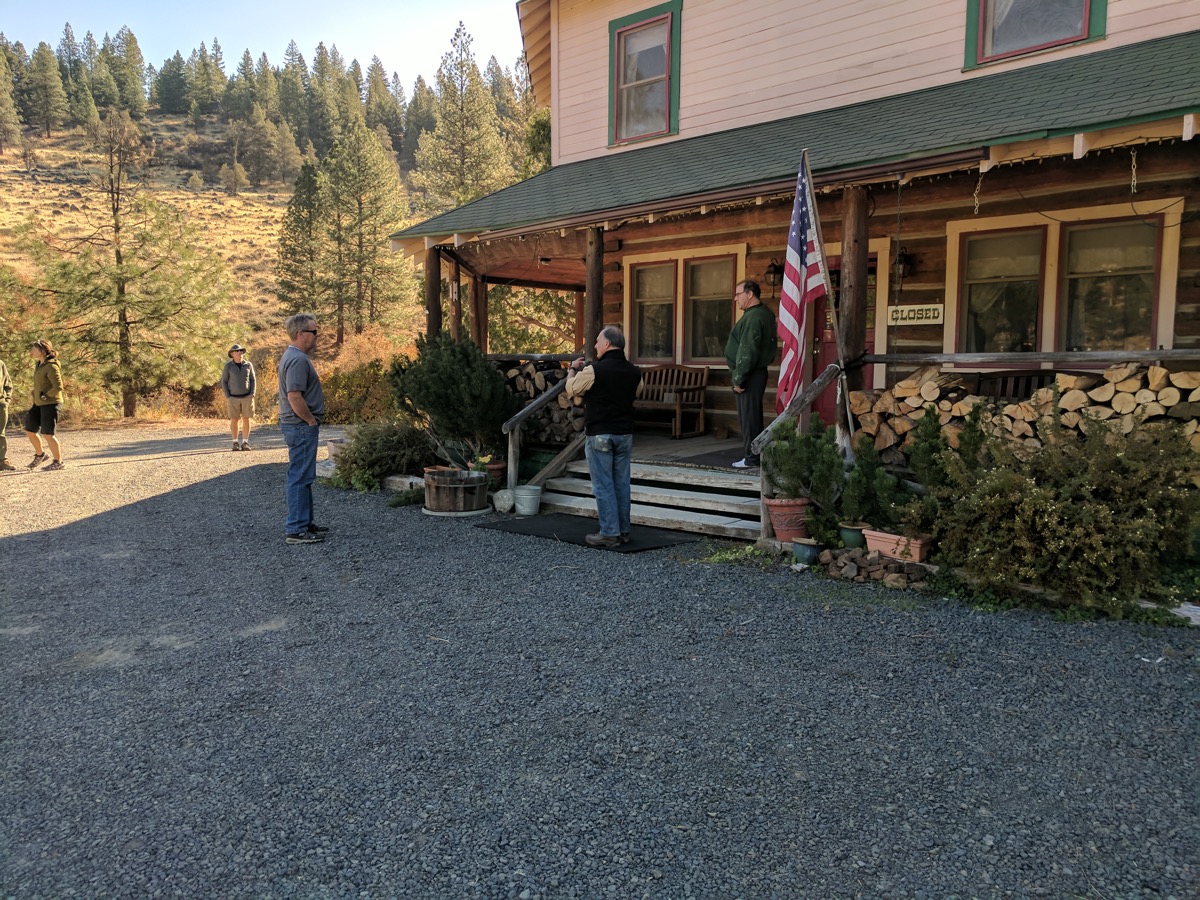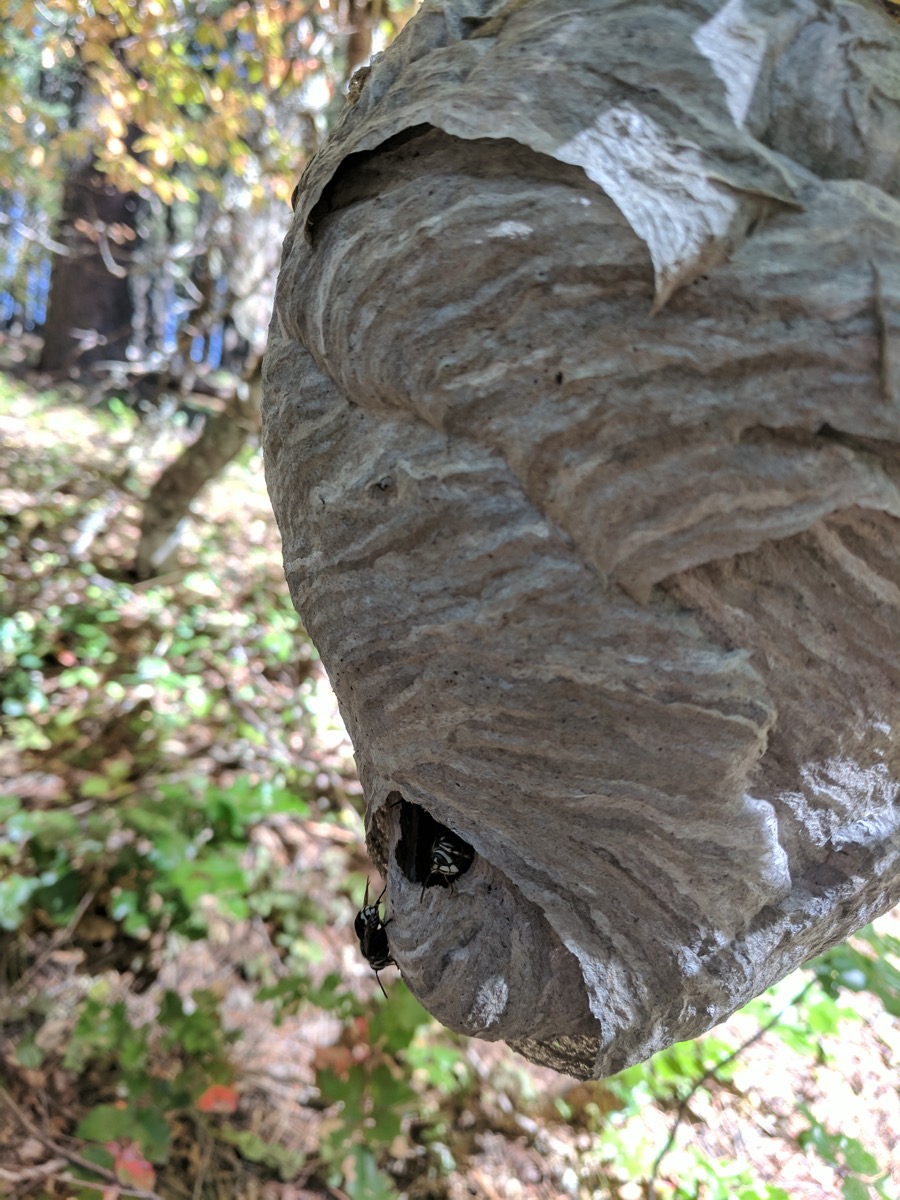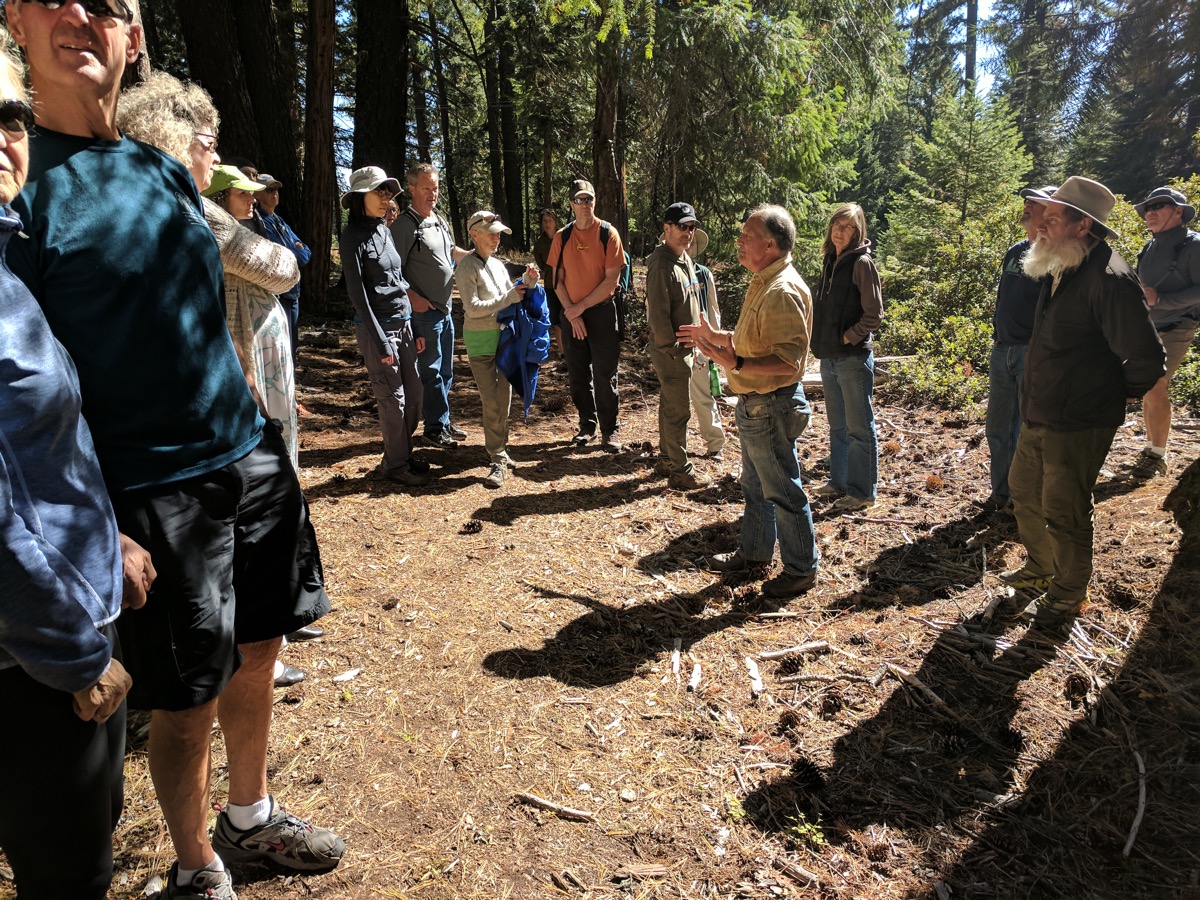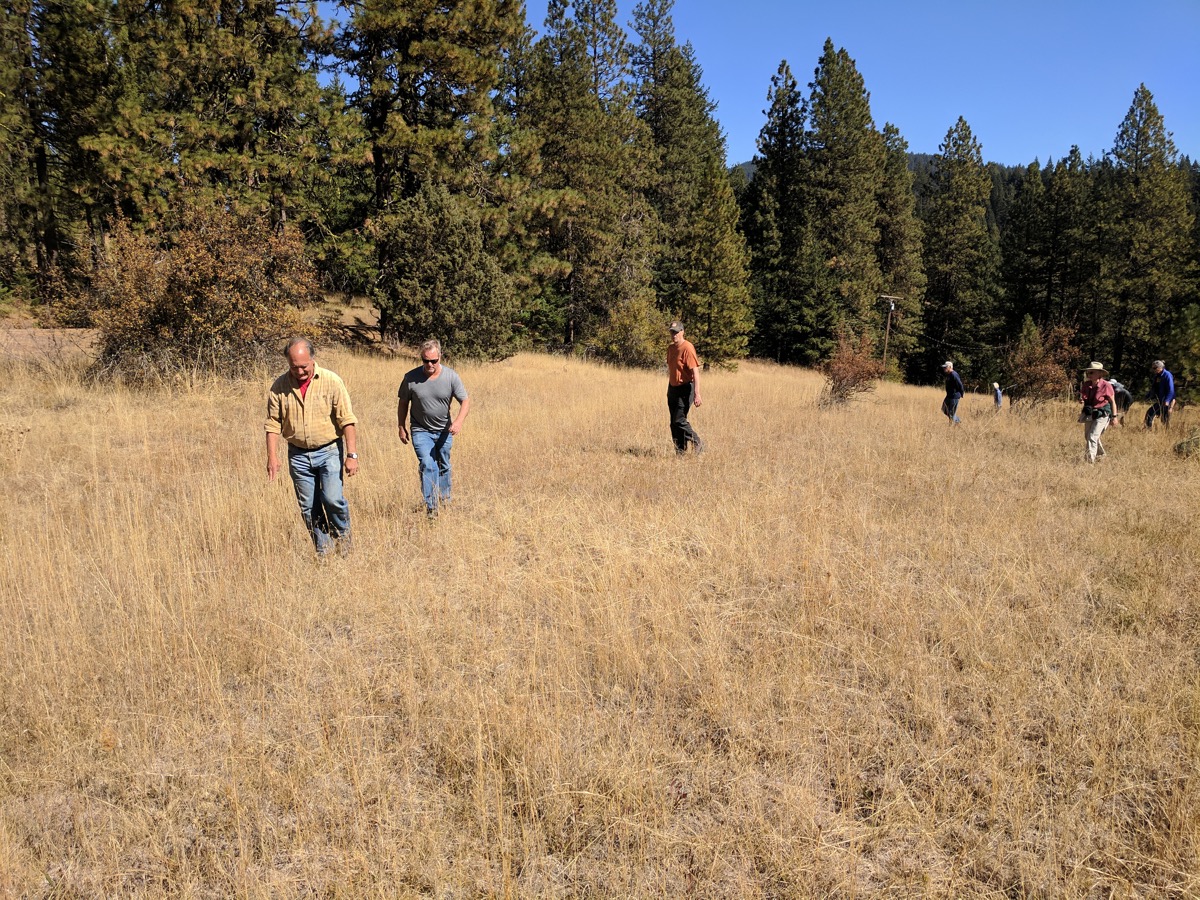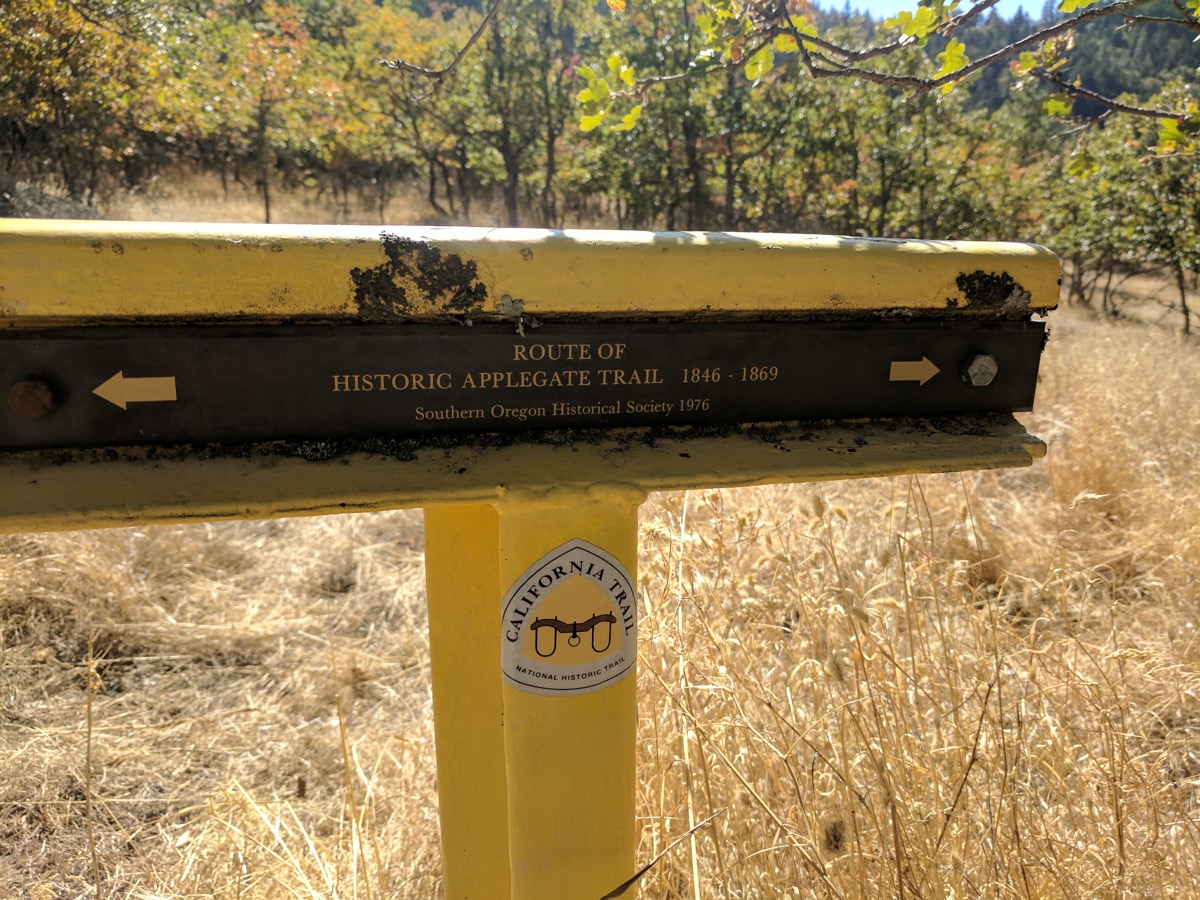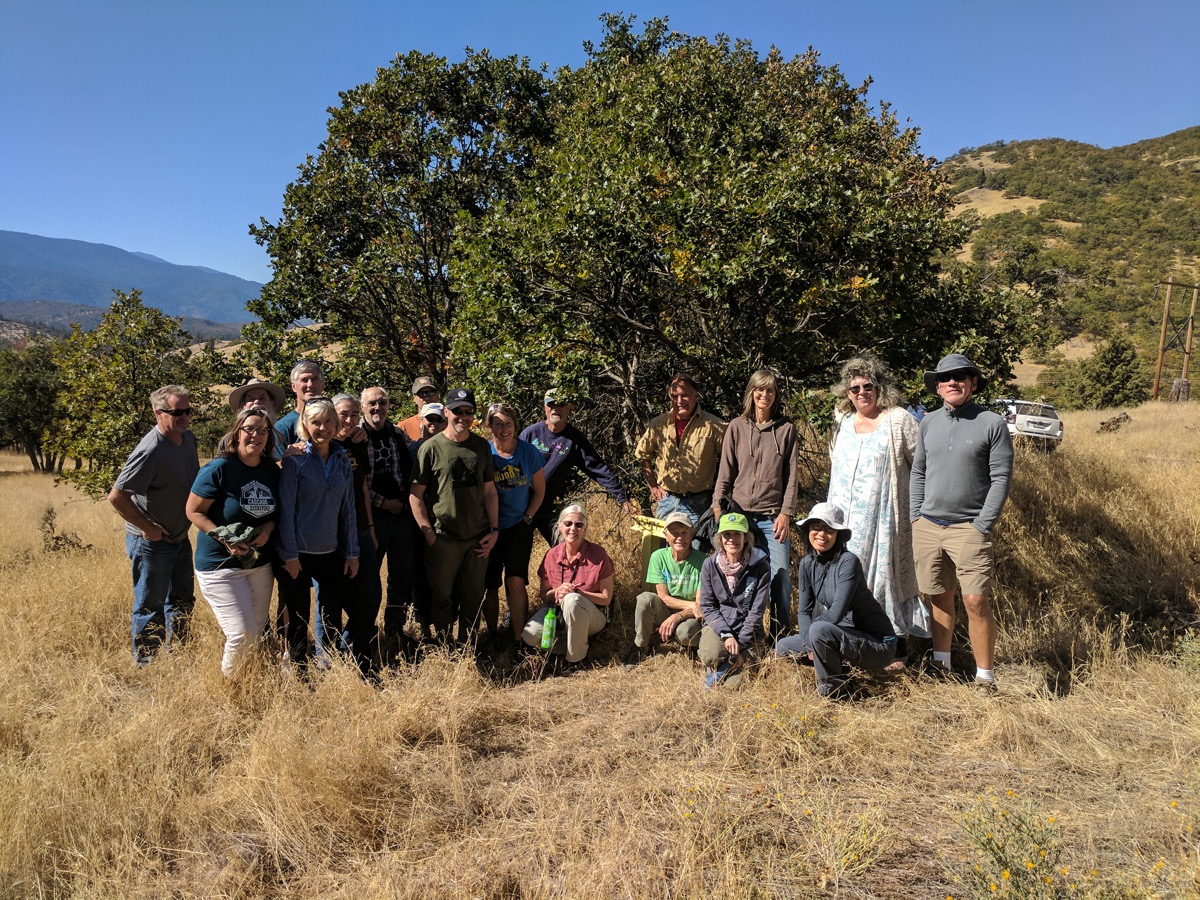Saturday, October 7, 2017
Dr. Jeff LaLande, historian and US Forest Service archeologist, lead us on an exploration retracing the Applegate Trail through the Cascade-Siskiyou National Monument. We spent the day following historical markers and listening to stories from emigrants that rode the trail from the east to get to the Willamette Valley. ("The Applegate Trail, first laid out and used in 1846, was a southern alternative to the western-most segment of the Oregon Trail..." more by Jeff LaLande at Oregon Encyclopedia)
We started the morning at Pinehurst Inn, alongside Jenny Creek. This was not a stop along the original trail, but Jenny Creek was the location of the first of three wagon slides that emigrants using the trail had to navigate to get through the mountains and into the valley that would later become Ashland. We listened to pigmy nuthatches in the incense cedars overhead as Dr. LaLande read accounts of different travelers coming through this area, anticipating their destination after being on the trail for months.
Our next stop was Tub Springs where we actually found ourselves in some wagon ruts that might have actually been part of the original Applegate Trail. There is also an old wagon road here that was built in the 1860s as a route to the Klamath Basin. Tub Springs was very important to many emigrants as a source of fresh water for them and their livestock.
At Green Springs Summit, we looked out across Keen Creek where the third and final wagon slide was located, where the dam is now. Emigrants would use rope to slide their wagons down to Keen Creek and then they would use two teams of oxen to pull their wagons out of the valley. The trail then followed what is now Tyler Creek Road down to Emigrant Creek.
We loaded back up into our modern day wagons and turned onto Tyler Creek Road to follow the trail back into the valley. Along our way down the mountain, we stopped along the road to observe a yellow post. These markers were placed in 1976, as part of America’s Bicentennial celebration, to mark the historic Applegate Trail. During this commemoration, a group of individuals rode in wagons up the Applegate Trail from the Humboldt Valley to reenact an 1860s emigration.
Our final stop was at Hill Dunn Cemetery, overlooking Emigrant Lake. Dr. LaLande read more accounts from travelers as they entered the valley. These pioneers described their first impressions of the valley as they spent their first night at the Mountain House, Hill House, or Walker House. The peace and resources of the valley were very welcoming to these, who had been traveling for months.
Our hike came to a close as we listened to the emigrants' plans for the future and stories about what happened to them. What a great way to wrap up our Hike & Learn season, on a beautiful day, after enjoying our public lands.
Story and photos by
John Ward, Hike and Learn Coordinator
